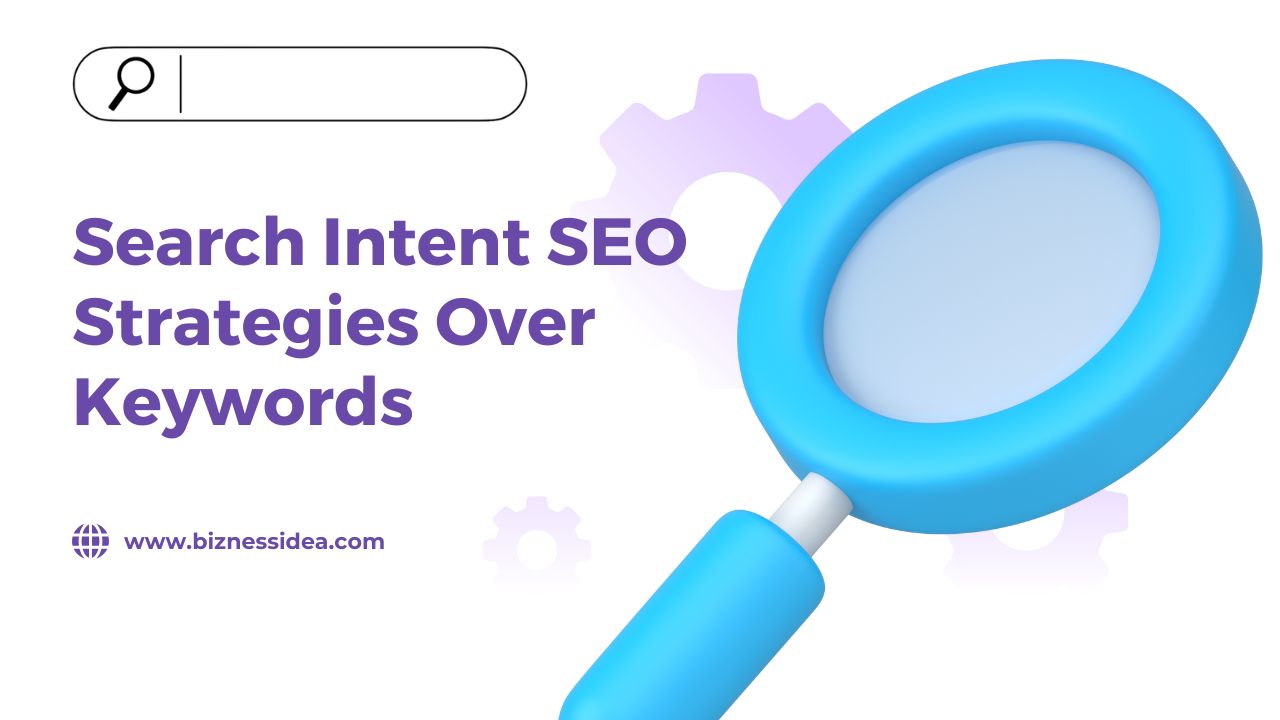SEO (search engine optimisation) is a method that even large companies use to market their products and get them ranked organically. But today in the SEO landscape, creating content that aligns with the user’s search intent is more important than obsessing over keywords alone. While keywords still play a role in search engines like Google, they no longer prioritise content that satisfies what the user wants. This shift calls for a smarter approach: the search intent SEO strategy. In this article, you will get to know what search intent is, how it works, and how to implement a search intent SEO strategy effectively to drive traffic, improve rankings, and increase conversions.
Introduction to Search Intent in SEO Strategy
What Is Search Intent, and Why Does It Matter in SEO?
Search intent, also known as user intent SEO, refers to the reason behind a user’s query on a search engine. This is what the user expects to achieve, such as accessing fund information, making a purchase, exploring clothing options, and visiting the website. A strong search intent SEO strategy ensures that your content aligns with these motivations, allowing search engines to recognise your page as a relevant result.
Types of Search Intent in SEO Strategy: Navigational, Informational, Transactional & Commercial
- Navigational Intent: Navigational search intent in SEO happens when users already know where they want to go and use a search engine to get there quickly. Unlike searches aimed at gathering information, these are focused on reaching a particular website, brand, or online destination. When a user visits a specific website, it is a navigational intent. There are some examples like “Instagram login” or “Nike official site.”

- Informational Intent: Informational search intent refers to queries aimed at finding knowledge, answers, or explanations. This includes users who come to collect some information or gain facts. Such as “How to bake a cake” or “What is SEO?” It is mostly used when the user just has a topic to know about. Searchers are looking for information or answers to specific questions.
- Transactional Intent: This means that when the user is ready to complete their action or task, this mostly happens for transactions. In simple terms, transactional search intent refers to searches where users are ready to take action, often involving a purchase or signing up for a service. These searches signal high potential for conversions since users have moved beyond the research phase and are prepared to act. Example: “Buy running shoes online” or “Get a Netflix subscription.”
- Commercial Investigation: Commercial search intent in SEO refers to queries from people who are researching products or services but aren’t quite ready to make a purchase. These searches often involve comparing options, reading reviews, and evaluating features to make a well-informed decision. The user is comparing before buying
Example: “Best laptops under $1000” or “Ahrefs vs Semrush.”
Why Understanding Search Intent in SEO Strategy Matters More Than Keywords
A page filled with keywords but misaligned with user intent will likely cause users to bounce and underperform in rankings. Search engines have evolved to focus on semantic relevance and user satisfaction. Therefore, prioritising focus on user intent SEO is critical.
How Google Rewards Intent-Focused Content
Google’s algorithms now reward pages that accurately satisfy the user’s query, not just match keywords. Google has shifted its focus towards understanding natural language and context through advancements such as BERT, RankBrain, and helpful content updates.
So, if your page answers the real need behind a search query, you’re more likely to:
- Rank higher
- Get featured in rich snippets
- Appear in “People Also Ask” sections
- Lower bounce rates and increased dwell time
If you want to optimize for search intent, then ask.
What is the user trying to find with this query?
How to Optimise Content Based on Search Intent
Step-by-Step Search Intent Optimisation Tips
- Analyse the SERPs: Google the target keyword and observe the top-ranking pages. Are they blog posts, product pages, videos, or tools?
- Match Content Format to Intent: The format of the content should match the user’s intent. Informational = Blogs, guides, listicles, Transactional = Product pages, CTAs, Navigational = Clear headings, branded content, Commercial = Comparisons, reviews, FAQs
- Use Clear and Relevant Headlines: The heading should be valid and match the content of what the user wants to know or what he is searching for. Headings should directly address the intent behind the search. For example, “Top 10 Laptops for Students” vs. “Laptop Features Overview.”
- Include Structured Data: The more schema you add, the more your visibility in SERPs will increase, such as FAQs schema, product schema, review schema, etc.
- Update Content Regularly: Keep updating your content regularly, add new information as per the information received, and this will make it easier for the user to address. Outdated content loses relevance. Refresh data, update images, and re-align with evolving intent.
Tools to Identify Search Intent (Google, Ahrefs, Semrush, People Also Ask)
- Google SERPs: It observes the ranking types of content for your target terms.
- People Also Ask: This is a great tool for knowing queries and sub-intents.
- Ahrefs/Semrush: It checks the keyword intent to see which classification the intent belongs to (navigational, transactional, or informational) and analyzes competing pages according to the intent.
- Google Analytics/Search Console: Review user behaviour, time on page, and bounce rate to assess if your content satisfies intent.
These tools provide both LSI (Latent Semantic Indexing) keywords and contextual clues to align your content better.
Search Intent vs. Keywords: What’s the Real Difference?
Traditional SEO often centred around exact-match keywords. But now, search intent SEO strategy focuses on understanding the purpose behind the query, not just its wording.
- Search intent focuses on the user’s goal or motivation, while keyword content focuses on specific words the user types.
- Search intent changes with trends and behaviour, while keywords are more stable, tied to language.
- Search intent engagement metrics, conversions, keyword intent search volume, and keyword difficulty.
Why Traditional Keyword Stuffing Fails in 2025
- Negative User Experience: Unnatural repetition of keywords disrupts readability. Users quickly lose interest, leading to higher bounce rates and lower engagement.
- Outdated SEO Thinking: Modern search engines prioritise semantic search, user intent, and overall content quality. Keyword stuffing feels like a relic from a bygone SEO era.
- Algorithmic Detection: Google’s algorithms are better than ever at detecting manipulative practices like keyword stuffing. Instead of boosting rankings, it often leads to penalties.
Some reasons are also there, which are as follows:
- Hurts readability
- Increases bounce rate
- Leads to Google penalties
Crafting an Intent-Based SEO Content Strategy
Developing a strong SEO intent-based content strategy means mapping content types to every stage of the user journey.
Creating a Content Map Based on User Journey
| Funnel Stage | Search Intent | Content Type |
| Awareness | Informational | Blog posts, Infographics, Videos |
| Consideration | Commercial | Comparison articles, case studies, and testimonials |
| Decision | Transactional | Landing pages, product demos, pricing pages |
Example:
For a keyword like “best email marketing software,” the intent is commercial.
So, write a comparison blog instead of a generic “what is email marketing” article.
Conclusion
In 2025 and beyond, your SEO performance depends less on keywords and more on how well you satisfy the user’s intent. By following a search intent SEO strategy, you’ll produce more relevant content, attract the right traffic, and convert better. To improve SEO with search intent, start by analysing SERPs and user behaviour, align content formats with intent types, avoid keyword stuffing, and aim for helpful, actionable content. Use available tools to track and refine your approach.
Frequently Asked Questions (FAQs)
Que 1. What is search intent in SEO?
Ans. Search intent refers to the reason behind a user’s query, whether they’re looking for information, trying to buy, or browsing. It helps you tailor your content to their expectations and needs.
Que 2. How do I optimise content for search intent?
Ans. Start by analysing the SERPs, identifying the intent (informational, navigational, transactional, or commercial), and matching your content format to that intent. Use tools like Ahrefs and Google’s “People Also Ask” for insights.
Que 3. Why is search intent more important than keywords?
Ans. Because satisfying user intent leads to better engagement, lower bounce rates, and higher rankings, keywords help attract traffic.
Que 4. Can I still use keywords in intent-based SEO?
Ans. Yes, but strategically. Focus on semantic relevance, natural phrasing, and answering the user’s core question rather than keyword repetition.













